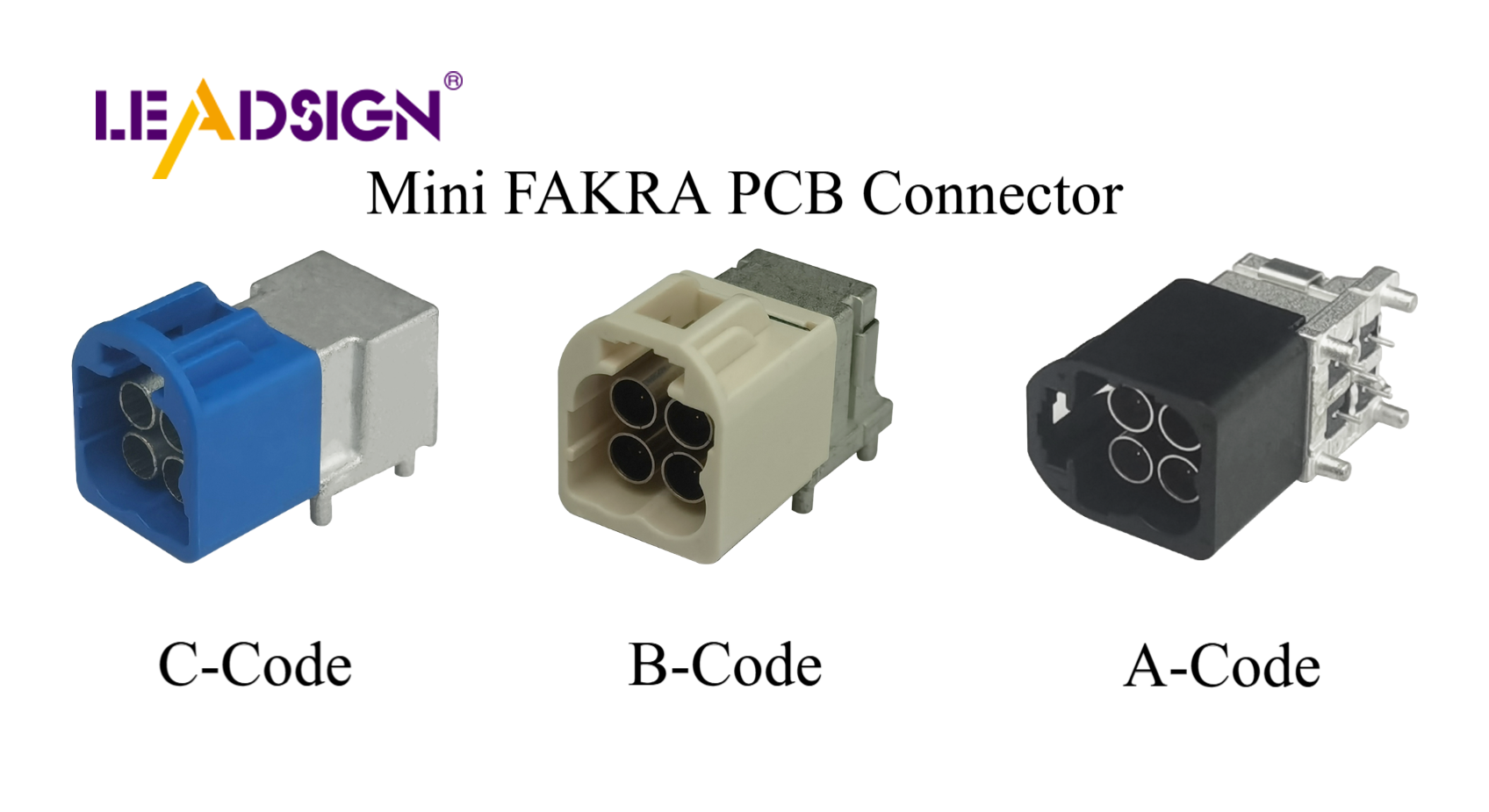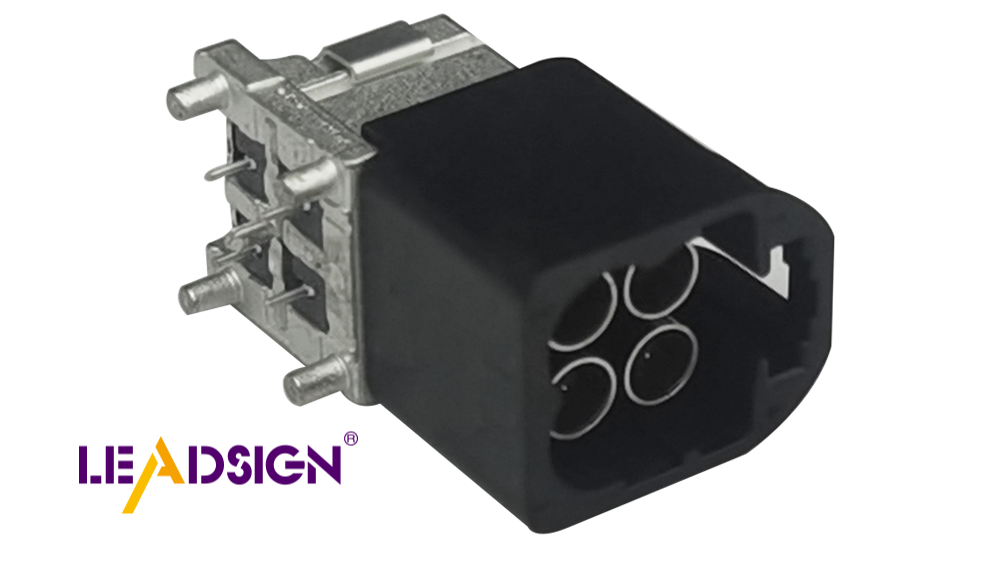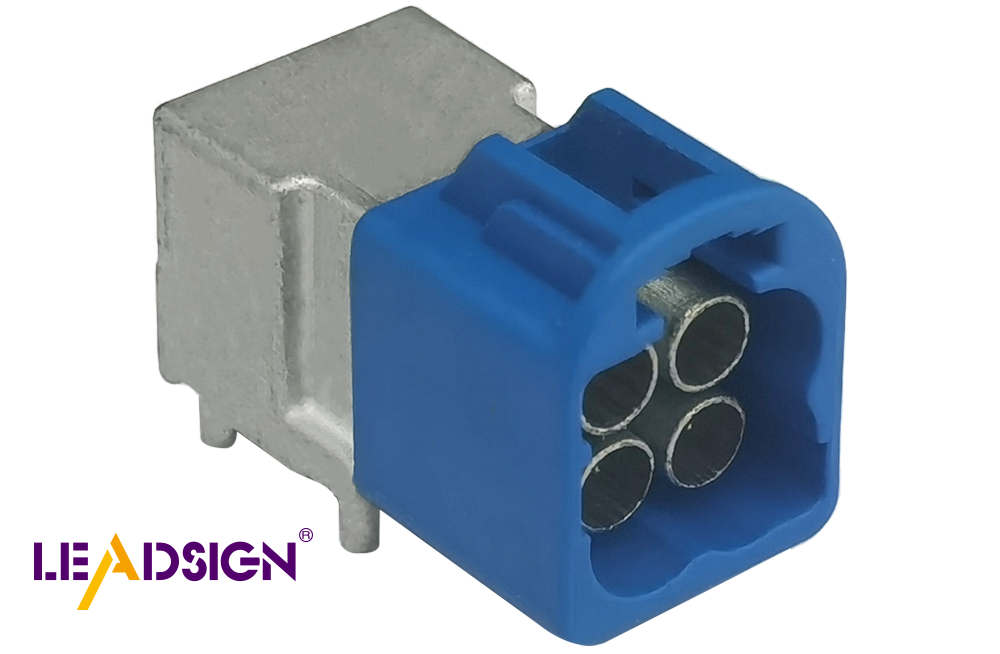Exploring the Differences Between FAKRA and Other Automotive Connector Types

RF connectors are important for car systems to work well. FAKRA connector types are special because they are strong and comply with automotive standards. They utilize an SMB interface and feature a locking mechanism for enhanced safety. Their colored casings make them easy to identify and install correctly. These connectors are used in GPS, satellite radio, and more in cars today. Understanding how FAKRA connector types differ helps in selecting the right connector for automotive applications.
Key Takeaways
FAKRA connectors are designed for automotive use, featuring color-coded housings for easy identification and a secure locking mechanism for stability.
These connectors support high-frequency signals, with regular FAKRA handling up to 6 GHz and Mini FAKRA reaching up to 20 GHz, making them ideal for advanced car systems.
FAKRA connectors are built to withstand harsh automotive environments, ensuring durability against vibrations and extreme temperatures.
Their ease of installation, thanks to color coding and a reliable locking system, reduces setup errors and maintenance needs.
While FAKRA connectors are versatile for many automotive applications, HFM and HSD connectors may be better suited for specific high-speed data tasks or tight spaces.
Choosing the right connector is crucial; FAKRA is excellent for general automotive use, while HFM and HSD excel in specialized applications.
Overview of FAKRA Connector Types

Design and Structure
FAKRA connectors are designed to be reliable and easy to use.
Color-coded housings: Each connector has a plastic cover with a unique color. This helps people quickly identify them during setup or repairs, avoiding mistakes. color-coded housings
Secure locking mechanism: These connectors have a strong lock system. It keeps connections stable even when cars vibrate a lot.
Mini FAKRA: Mini FAKRA is smaller and saves 80% of space. This makes it perfect for vehicles where space is limited.
Functionality and Performance
FAKRA connectors are built to handle tough car system needs. They work well for fast and high-frequency uses.
Optimized for high-frequency RF signals: Regular FAKRA handles up to 6 GHz, while Mini FAKRA goes up to 20 GHz. This ensures clear signals for advanced car systems. high-frequency RF signals
Compliance with industry standards: These connectors meet USCAR and other global rules. This means they work reliably in many vehicle setups.
High data rates: Mini FAKRA can send data at speeds of 28 Gbps. This is great for systems like self-driving cars that need quick data sharing.
Common Automotive Applications
FAKRA connectors are key parts of many car technologies today. Their flexibility and performance make them essential in modern cars.
GPS and navigation systems: They help GPS devices send accurate signals, improving navigation.
Satellite radio and telematics: These connectors allow smooth communication for satellite radios and telematics, keeping connections steady.
Autonomous driving and driver assistance systems: Mini FAKRA's speed and small size support self-driving tech and advanced safety features.
Overview of Other Common Automotive RF Connector Types
SMA Connectors
Small size and good performance at high frequencies
SMA connectors are small and work well with high-frequency signals. They can send RF signals over a wide range with little loss. Their tiny size helps them fit into tight spaces in electronic devices.
Mostly used outside of cars
While SMA connectors are great for RF tasks, they are not common in cars. Industries like telecom, aerospace, and labs use them more often. They lack features like vibration resistance and sealing, which cars need.
BNC Connectors
Easy to connect and disconnect
BNC connectors have a special design that makes connecting simple. You can attach or remove cables quickly without tools. The locking system keeps the connection secure.
Rarely used in cars
Even though they are easy to use, BNC connectors are not popular in vehicles. Their frequency limit of 4 GHz is too low for modern car systems. They also don’t handle vibrations or extreme temperatures as well as FAKRA connectors do.
Note: People often use BNC connectors for TV signals because they are cheap and versatile.
MCX and SMB Connectors
Tiny size for small spaces
MCX and SMB connectors are very small, making them great for tight spaces. They’re commonly used in portable gadgets where saving space is important.
Not as strong as FAKRA
Though MCX and SMB connectors save space, they aren’t as tough as FAKRA ones. They don’t have strong locks or resist harsh conditions well. This limits their use in cars to simpler tasks where durability isn’t critical.
Other Automotive-Specific Connectors
HFM Connectors: High-frequency performance (up to 20 GHz) and modular design
HFM connectors are the next step in car connector technology. They handle high frequencies, working up to 20 GHz. Their modular design saves space, reducing installation needs by 80%. This makes them great for modern cars where space is tight.
Main features of HFM connectors include:
High data rates: They send data at speeds up to 28 Gbps. This helps advanced car systems communicate quickly.
Strong build: Made to survive tough conditions, they work well in extreme environments.
Cost-effective: Their design not only saves space but also lowers costs.
HFM connectors are used in self-driving tech, safety systems, and infotainment. Their speed and reliability make them essential for modern car technologies.
Note: HFM connectors are smaller than FAKRA ones, making them better for tight spaces.
HSD Connectors: Designed for high-speed data transmission in infotainment systems
HSD connectors are made for fast data transfer in car entertainment systems. They help connect displays, cameras, and controls smoothly.
Key traits of HSD connectors include:
Fast performance: Built for quick and steady communication between devices.
Small size: Their compact shape fits into small spaces in cars.
Toughness: They meet automotive standards and resist vibrations and heat changes.
HSD connectors are widely used in navigation, rear-seat screens, and entertainment. They manage multimedia data well, improving the experience inside vehicles.
Both HFM and HSD connectors show how special designs solve modern car challenges. Their smart features prove why choosing the right connector matters for every need.
Comparing FAKRA Connectors to Other RF Connector Types

Frequency Range and Signal Integrity
FAKRA's optimized performance for automotive RF signals (up to 6 GHz)
FAKRA connectors are great for car systems needing clear signals. They work well with frequencies up to 6 GHz. This makes them perfect for GPS, satellite radio, and internet in cars. Their design ensures smooth signal flow without interruptions. These connectors follow strict standards like FAKRA and USCAR rules. This helps them perform reliably in different car environments.
Note: Their ability to keep signals strong makes them dependable for cars.
Mini FAKRA's extended frequency range (up to 20 GHz) compared to SMA, BNC, and others
Mini FAKRA connectors can handle higher frequencies up to 20 GHz. This is better than SMA or BNC connectors that work at lower levels. Mini FAKRA also sends data super fast at speeds of 28 Gbps. These features make them ideal for self-driving and safety tech in cars. Fast data sharing is key for these advanced systems.
Comparison: SMA and BNC are good but lack the features needed for modern vehicles.
Durability and Environmental Resistance
FAKRA's robust design for vibration and temperature extremes
Cars need tough connectors that survive harsh conditions. FAKRA connectors are built strong to handle vibrations and extreme heat or cold. Their locking system keeps connections steady even when cars shake a lot. The plastic cover protects against water, dust, and other damage, making them last longer.
Comparison of environmental resistance with SMA, BNC, and MCX connectors
Compared to SMA, BNC, or MCX types, FAKRA is much tougher. SMA and BNC work fine indoors but aren’t as rugged for cars. MCX is small but not strong enough against shaking or rough use. That’s why FAKRA connectors are better for reliable car systems in tough conditions.
Insight: Strong designs help these connectors last longer with less fixing needed.
Ease of Installation and Maintenance
FAKRA's color-coded and secure locking system
FAKRA connector types are easy to use because of their colors. Each color shows what it’s used for so mistakes don’t happen during setup. The locking system keeps the connection tight even under stress from movement or bumps on the road. This saves time since fewer fixes are needed later on.
Installation challenges with other connector types
Other types like SMA or BNC can be harder to install right away. SMA needs careful alignment which takes more time during setup. BNC connects quickly but doesn’t lock securely enough for moving vehicles’ needs. MCX is small but isn’t as stable as FAKRA connectors, especially under pressure.
Conclusion: Smart designs make FAKRA connectors simple yet reliable choices for car systems.
Application Suitability
Why FAKRA is great for car-specific RF uses
FAKRA connectors are strong and follow strict car industry rules. They meet tough standards like FAKRA and USCAR, making them reliable. These connectors work well at frequencies up to 6 GHz. This helps systems like GPS, satellite radio, and car internet run smoothly. Their locking system keeps connections secure, while color-coded covers make setup easy.
FAKRA connectors are very useful in modern cars. They work in many systems, such as navigation and telematics. They stay strong even with high vibrations or big temperature changes. This makes them a top choice for safer and better car designs.
When HFM or HSD might be better options
Sometimes HFM or HSD connectors are better than FAKRA connectors. For example, HFM connectors are great for self-driving tech and advanced safety features. They handle up to 20 GHz frequencies and send data super fast at 28 Gbps. Their small design saves space, which is helpful in tight car setups.
On the other hand, HSD connectors work best in entertainment systems inside cars. They connect screens, cameras, and controls quickly and reliably. Their small size fits well into modern car interiors while staying tough under stress.
Key Insight: Picking the right connector depends on the job it needs to do. FAKRA connectors are best for general use in cars, but HFM and HSD connectors are perfect for high-speed data tasks or when space is limited.
FAKRA connectors are strong, follow car industry rules, and work well with high frequencies. Unlike SMA, BNC, or MCX connectors, FAKRA connectors handle tough conditions cars need. Mini FAKRA is smaller but works even better with frequencies up to 20 GHz.
Choosing the right connector depends on needs like frequency, strength, and easy setup. For cars, FAKRA connectors are very reliable and perform great. Use FAKRA or Mini FAKRA for advanced car systems to keep them working safely and properly.
See Also
Discovering The Advantages Of Fakra Connectors In Cars
A Detailed Overview Of Fakra Connectors For Vehicles
Why Fakra Connectors Matter In The Auto Sector

